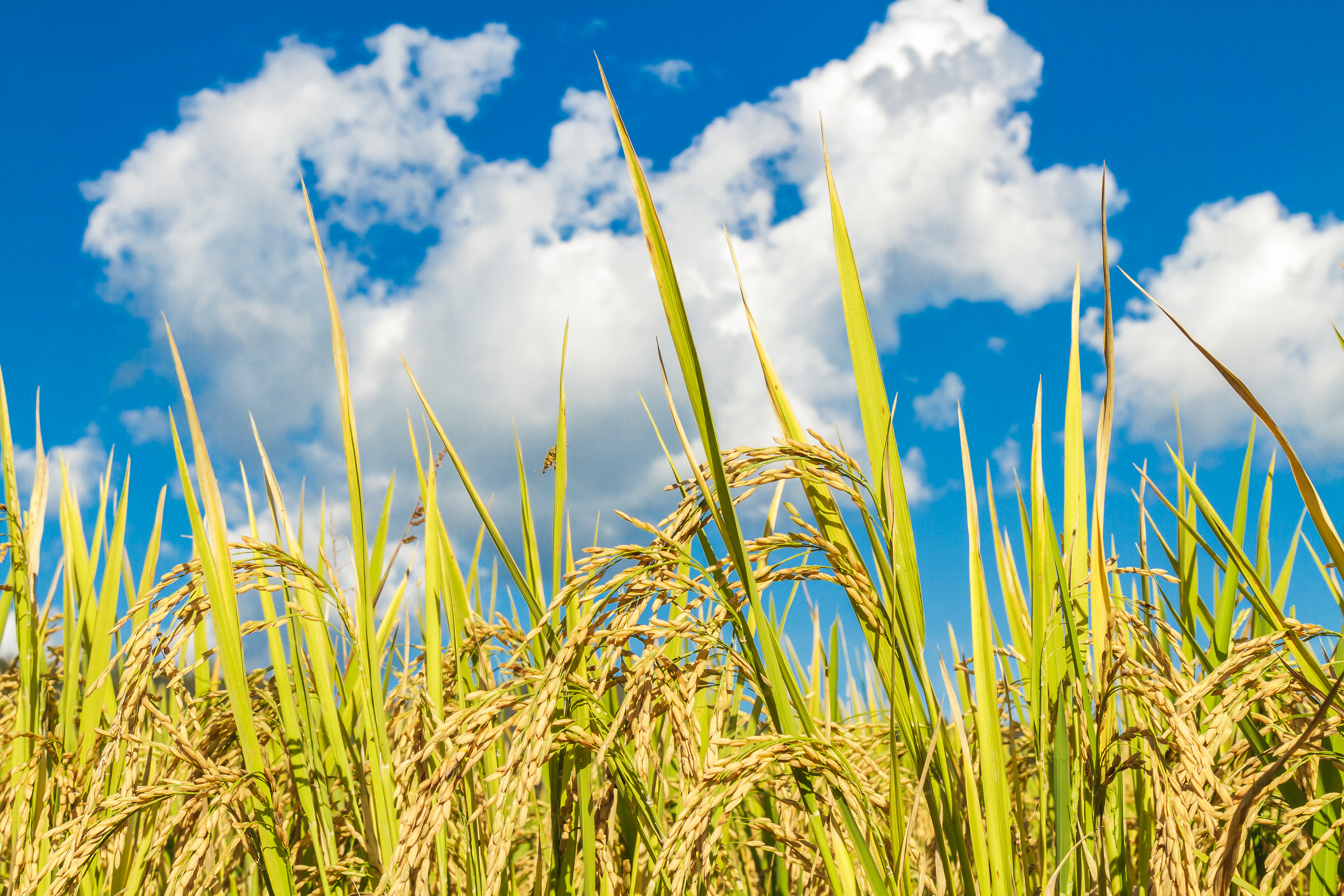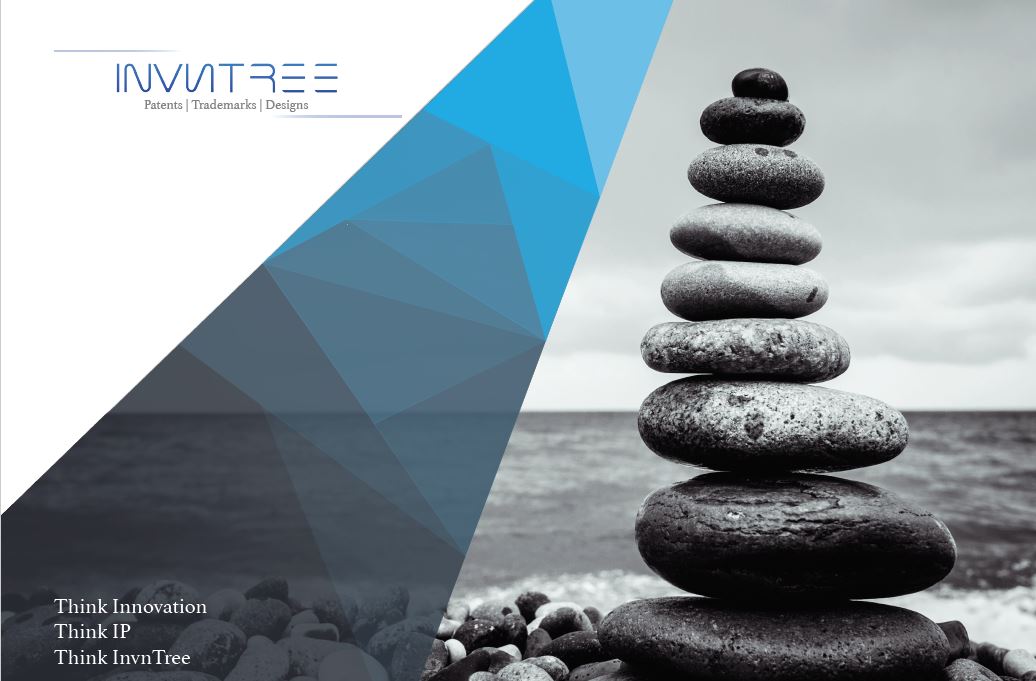Monsanto Vs Nuziveedu Patent dispute: Brief Analysis of Judgement

The recent advancements in the field of plant biotechnology has promoted multifold growth of agro-biotech industry. The recent research in the plant genomics has resulted in producing sustainable varieties of plants and crops. The increase in the number of patents stands as a witness for the paradigm shift in the field of plant biotechnology.
However, enforceability of these patent rights remains a challenge. The increase in the number of patent infringement litigations in the agro-biotech industry in the recent times, is an indication of said challenge. A brief analysis of patent litigation between agro-biotech based companies, Monsanto and Nuziveedu Seeds is presented below.
Background of the case
Monsanto is an American multinational agrochemical and agricultural biotechnology corporation, whereas Nuziveedu Seeds is an Indian agribusiness company, known to be among the largest hybrid seed companies in the country. Monsanto had licensed its patent IN214436 relating to Bt. Cotton technology to different Indian companies including Nuziveedu Seeds, for which a lifetime fee of Rs. 50 lakh was charged along with a recurring ‘trait value’ as compensation. The Indian companies utilized said patented technology to produce cotton seeds that are resistant to boll-worm attacks.
The Indian companies demanded Monsanto to reduce the trait fee as the State Governments were passing new price control orders to fix the trait fees. Monsanto refused to reduce the trait fees. Consequently, the Indian companies stopped paying royalties to Monsanto since October 2015. Subsequently, Monsanto sent a notice to Nuziveedu in November 2015 regarding the termination of their sub-license. Nuziveedu and few other Indian companies approached Competition Commission of India (CCI) against Monsanto and alleged Monsanto of anti-competitive practices including “the abuse of dominant position” and “anti-competition agreements”.
Monsanto terminated its contract and initiated arbitration proceedings for the recovery of the due amount of Rs. 400 crores from the Indian companies. Additionally, a lawsuit was initiated by Monsanto before Delhi High Court against Nuziveedu Seed Ltd., Prabhat Agri Biotech Ltd. and Pravardhan Seeds Pvt. Ltd, seeking an injunction for patent and trademark infringement.
As a response to the infringement allegations, the defendants filed a counter-claim for the revocation of the plaintiff’s patent. The defendant urged to revoke the patent as per the provisions of Section 8, Section 10(4) and argued that the patent is invalid, as it falls within the scope of Section 3(j) and 3(h) of Patents Act.
Decision by Single Judge of the Delhi High Court
The Single Judge of the Delhi High Court reinstated the sub-licence that was terminated by Monsanto. It allowed Nuziveedu Seeds and other Indian companies to continue using the patented technology till the suit is disposed, wherein, the trait fee must be paid in accordance with the government set rates. The Single Judge also rejected the arguments of the defendant about the validity of the patent.
Appeal to Division Bench of Delhi High Court
Both the parties appealed to the Division Bench of Delhi High Court against the order of Single Judge. Monsanto challenged the decision of the Single Judge to re-instate the licence terminated by them. The defendants challenged the rejection of their arguments about the validity of plaintiff’s patent.
Decision by Division Bench of the Delhi High Court
The Division Bench concluded that the subject patent falls under the provisions of Section 3(j) of the Patent Act and held that the claims of the patent are unpatentable. The Division Bench upheld the order of Single Judge regarding the trait fee payable by the Indian companies to Monsanto. The court gave a time period of three months to Monsanto to seek protection for its invention under “The Protection of Plant Variety and Farmers Right Act, 2001”.
Analysis on the Judgement
The order of the Division Bench to invalidate the patent under Section 3(j) is not convincing in our view. The court appears to have arrived at the judgement without adequate claim construction and expert witness. The claim construction is the primary requirement in deciding the validity of a patent, which in the present case, appears to have been inadequate. The misinterpretation of Section 3(j) to invalidate the patent is a major setback to innovation in the field of plant biotechnology.
According to Section 3(j), following inventions are not patentable:
“(j) plants and animals in whole or any part thereof other than micro organisms but including seeds, varieties and species and essentially biological processes for production or propagation of plants and animals”
According to Section 3(j), plants and animals per se or any part thereof are not patentable. Moreover, ‘essentially biological processes’ to produce plants and animals are also not patentable. Though the definition of ‘essentially biological processes’ was not defined in the Patents Act, Rule 26(5) of the EPC states that “a process for the production of plants or animals is essentially biological if it consists entirely of natural phenomenon such as crossing or selection”.
In the present case, the court made an observation that:
“The conclusion that the court draws therefore, is that transgenic plants with the integrated Bt. Trait, produced by hybridization (that qualifies as an “essentially biological process” as concluded above) are excluded from patentability within the purview of section 3(j), and Monsanto cannot assert patent rights over the gene that has thus been integrated into the generations of transgenic plants.”
It is to be observed that, Monsanto got a patent for the introgression of specific Bt. bacteria genes into the cotton genome with human intervention. This cannot be considered as an essentially biological processes. So, the court’s observations in considering the claims of the Monsanto’s patent as essentially biological processes appears to be inappropriate.
Monsanto had alleged infringement of Claim 25 of the patent; claim 25 is recited below:
“A nucleic acid sequence comprising a promoter operably linked to a first polynucleotide sequence encoding a plastid transit peptide, which is linked in frame to a second polynucleotide sequence encoding a Cry2Ab Bacillus thuringiensis 8-endotoxin protein, wherein expression of said nucleic acid sequence by a plant cell produces a fusion protein comprising an amino-terminal plastid transit peptide covalently linked to said 5- endotoxin protein, and wherein said fusion protein functions to localize said 5-endotoxin protein to a subcellular organelle or compartment.”
The claim deals with the extraction of a specific nucleic acid sequence from Bacillus thuringiensis (Bt bacterium) and inserted into a plant cell. The modified nucleic acid sequence produces toxins that are resistant to boll-worm attacks.
Better claim construction and expert witness would have helped the court to prevent the misinterpretation of Section 3(j).
Monsanto has appealed before the Supreme Court and challenged the decision of Division Bench. We wish the apex court pronounces a judgement with reasoning, such that companies can continue to innovate and seek protection within the framework of the Patents Act and international obligations, which India has agreed to by way of TRIPS, and the like.
We hope this article was a useful read.
Please feel free check our services page to find out if we can cater to your requirements. You can also contact us to explore the option of working together.
Best regards – Team InvnTree
This work is licensed under a Creative Commons Attribution-NonCommercial 3.0 Unported License
Monsanto Challenges High Court Judgement Adversely Affecting Patentability in the Field of Agricultural Biotechnology

The Delhi High Court on April 11, 2018 pronounced its judgement in a litigation between Nuziveedu and Monsanto. The judgement held one of Monsanto’s important patents invalid. The patent was critical to Monsanto for protecting its business interest in their hugely successful Bt cotton seed variety Bollgard II.
The patent was held invalid under Section 3(j) of the Patents Act. Section 3(j) disallows patenting of “plants and animals in whole or any part thereof other than micro organisms but including seeds, varieties and species and essentially biological processes for production or propagation of plants and animals.” The Court held that the subject matter covered by the patent is “essentially biological process”, and therefore not patentable.
In the general sense, the patent in question claimed a selected sequence of a specific bacteria placed at a specific location in the plant genome, to produce a specific type of fusion protein. In practice, the resulting fusion protein would adversely affect pest(s) that are common to cotton plants.
The judgement is specifically important because it was common practice of the agro-biotech industry to protect key genetic material by claiming the same in a manner similar to the approach explained above, to work around the provisions of Section 3(j). Especially, the strategy enabled patent applicants in similar situations to argue that the claims are not directed at protecting plants and animals in whole or any part thereof, including seeds, varieties and species and essentially biological processes for production or propagation of plants and animals. Instead, the claims are directed at micro-organisms, which is not a subject matter barred from patenting. However, given the present judgement, the above discussed strategy, and in most cases the only available strategy, will not work anymore in securing patent protection for “inventions” of similar nature in the agro-biotech industry.
Monsanto has appealed to India’s Supreme Court against the ruling by the Delhi High Court. The agro-biotech industry and patent professionals will be closely watching this space given the far-reaching consequences of the outcome.
We hope this article was a useful read.
Please feel free check our services page to find out if we can cater to your requirements. You can also contact us to explore the option of working together.
Best regards – Team InvnTree
This work is licensed under a Creative Commons Attribution-NonCommercial 3.0 Unported License
Way Forward for the Critical Requirement of Furnishing Statement Regarding Working of Patented Invention in India

Statute corresponding to patents in India has provisions that mandate furnishing of information that attempts to establish the extent to which patented technology is being worked on a commercial scale in India. The nature of the information sought is such that compliance with these provisions is onerous, if not impossible, given the changing dynamics of business and inventions. Consequently, one could argue that most of the patent owners have in-principle failed to comply with these provisions. Further, although there are penal provisions applicable for noncompliance, such provisions have never been exercised.
Concerns regarding the above discussed provisions always existed among patent professionals and other stakeholders. However, these provisions are now being discussed extensively because of a public interest litigation, and the order that followed. The provisions, which are at the centre of the controversy include Sections 146(1), 146(2), 122, Rule 131 and Form 27.
146. Power of Controller to call for information from patentees
(1) The Controller may, at any time during the continuance of the patent, by notice in writing, require a patentee or a licensee, exclusive or otherwise, to furnish to him within two months from the date of such notice or within such further time as the Controller may allow, such information or such periodical statements as to the extent to which the patented invention has been commercially worked in India as may be specified in the notice.
(2) Without prejudice to the provisions of sub-section (1), every patentee and every licensee (whether exclusive or otherwise) shall furnish in such manner and form and at such intervals (not being less than six months) as may be prescribed statements as to the extent to which the patented invention has been worked on a commercial scale in India.
122. Refusal or failure to supply information.
(1) If any person refuses or fails to furnish
(a) to the Central Government any information which he is required to furnish under sub-section (5) of section 100;
(b) to the Controller any information or statement which he is required to furnish by or under section 146, he shall be punishable with fine which may extend to ten lakh rupees.
(2) If any person, being required to furnish any such information as is referred to in sub-section (1), furnishes information or statement which is false, and which he either knows or has reason to believe to be false or does not believe to be true, he shall be punishable with imprisonment which may extend to six months, or with fine, or with both.
131. Form and manner in which statements required under section 146(2) to be furnished.
(1) The statements shall be furnished by every patentee and every licensee under subsection (2) of section 146 in Form 27 which shall be duly verified by the patentee or the licencee or his authorised agent.
(2) The statements referred to in sub-rule (1) shall be furnished in respect of every calendar year within three months of the end of each year.
(3) The Controller may publish the information received by him under subsection (1) or subsection (2) of section 146.
(Emphasis added)
Section 146(1) recited above gives power to the Controller to call for information describing the extent to which the patented invention has been commercially worked in India. In practice, the Controller can exercise the power conferred by the referred section to decide request for compulsory licence to a patent, which may not be sufficiently worked in India.
On the other hand, Section 146(2) read with Rule 131 requires every patentee and licensee to furnish, every year, information describing the extent to which the patented invention has been commercially worked in India. Failure to comply with either of the above referred sections attracts penal provision as recited in Section 122.
In our view, Section 146(1) is an extremely useful provision, which may be exercised in specific circumstances, as explained earlier. However, an amendment to the section to explicitly recite the circumstances under which the Controller may/shall exercise the power to call for information, may prevent arbitrary use of such power.
The real problem, in our opinion, lies with Section 146(2), which requires voluntary submission of information, on a yearly basis, describing the extent to which the patented invention has been commercially worked in India. In our view, Section 146(2) should be amended to require at least one among patentee or licensee to state whether the patented invention is commercially worked or not in India, instead of requiring information concerning the extent of working of patented invention in India.
Our proposed amendment to Section 146(2) is based on the very purpose of having this provision in the Act, and the practical usage of the information furnished under this provision. The information submitted under Section 146(2) may be used to adjudicate request for compulsory licence to a patent, request to revoke a patent, or request for injunction. However, the proceedings concerning each of the listed requests may typically involve extensive submission, by parties involved in the dispute, of information describing the extent to which the patented invention is commercially worked in India, and the eventual judgement may rely of such information, and not on the information submitted under Section 146(2) on a yearly basis. In case the listed topics were to be adjudicated purely based on information collected under Section 146(2), then the efforts involved in putting together such information is colossal, if not impossible for large patent portfolios. The legislature also recognises the same, and its intent is expressed by the very fact that Section 146(1) exists. In view of all this, the information sought under Section 146(2) is redundant, and unnecessarily burdensome.
In conclusion, in our opinion, Section 146(2) should be amended such that, it should suffice if the patentee submits whether the patented invention is worked or not commercially in India, on a yearly basis. In case the patented invention is not worked, then the patent may be considered for license or compulsory licence, by third party. On the other hand, if the patented invention is marked as worked, then in all probability, detailed proceedings would follow when the patent is the subject matter of a challenge, in which case the Controller has the power to call for information under Section 146(1).
We hope this article was a useful read.
Please feel free check our services page to find out if we can cater to your requirements. You can also contact us to explore the option of working together.
Best regards – Team InvnTree
This work is licensed under a Creative Commons Attribution-NonCommercial 3.0 Unported License
India working towards disposing pending patent applications in the next two years

Minister for Commerce and Industry, under which the Department of Industrial Policy and Promotion (DIPP) functions, has been taking several initiatives for substantive improvement of IP environment in India. The recent initiatives include comprehensive National IPR policy, relocation of Copyright Office to DIPP, merger of the Copyright Board with the Intellectual Property Appellate Board (IPAB), establishment of Cell for IPR Promotion and Management (CIPAM) and launch of Start-up Intellectual Property Protection (SIPP) scheme, among others.
Adding to the above initiatives, the office of Controller General of Patents, Designs and Trade Marks (CGPDTM) is making efforts to clear the backlog of about 2.3 lakh pending patent applications. DIPP has hired substantial number of examiners and is likely to dispose these pending applications in next two years. The introduction of expedited examination and the recruitment of around 450 patent examiners to add to the pool of existing 130 examiners at the Intellectual Property Office (IPO) is witness to such efforts of the DIPP. This recruitment has increased the speedy disposal of pending patent applications. In the year 2016-17, about 9,847 patents were granted by the IPO, as against 6,326 in the previous year. IPO has improved its count in issuance of examination reports, which has increased to 6,000 patent applications a month from the earlier 1,500 applications.
Suresh Prabhu, Minister for Commerce and Industry, while addressing the Leadership Summit on Anti-Counterfeiting and Brand Protection at New Delhi last month, highlighted the efforts and initiatives of DIPP and IPO to dispose off the pending applications at the earliest. He announced that the Ministry is working to come up with an effective plan by which patent applications will be disposed in the least possible time. These initiatives are expected to bring down the pendency of patent applications and targeted at final disposal of patent applications from the present 5-7 years to less than 18 months.
We welcome the initiatives and efforts of the ministry in establishing a strong IP regime, and more importantly a time bound one, which is likely to boost innovation in the country.
We hope this article was a useful read.
Please feel free check our services page to find out if we can cater to your requirements. You can also contact us to explore the option of working together.
Best regards – Team InvnTree
This work is licensed under a Creative Commons Attribution-NonCommercial 3.0 Unported License
India begins sharing search strategies in International search report

International Searching Authorities (ISA) are appointed by the World Intellectual Property Organization (WIPO) for conducting prior art searches on Patent Cooperation Treaty (PCT) applications. There are currently 22 patent offices, including the Intellectual Property Office (IPO) of India, which are recognized as ISA. Applicants can choose from a list of ISA, typically based on their nationality. As an example, currently applicants from India and Iran can select IPO as the ISA.
ISA have the core objective of establishing International Search Report (ISR) on PCT applications. An ISR typically identifies one or more prior art references, categorizes the references based on their relevance, and may include a written opinion. However, among the 22 ISA, 6 ISA also used to include search strategies, which were used to conduct prior art searches while establishing the ISR. The IPO has now become the seventh ISA, which will be making public search strategies while establishing ISR.
In our view, sharing of search strategies is a wonderful initiative at least on three counts. Firstly, in the absence of search strategy, patent applicants had to blindly trust the ISR, and assume that the references cited in the ISR are likely to be the most relevant references. In the event of a poor quality ISR, an applicant may end up making investments into filing national phase applications, which may not get granted. Now that search strategies are being shared, applicants or their consultants may be in a better position to gauge the quality of ISR and take informed decisions.
Secondly, patent offices that subsequently receive national phase applications can examine the search strategies and calibrate their efforts. Additionally, examiners at national offices can build over the search strategies and avoid duplication of efforts.
Thirdly, and most importantly, the decision to share search strategies is particularly important from an Indian context. It may be worthwhile to acknowledge that India has significant backlog of patent applications, which are pending examination. In an effort to reduce backlog, the patent office has recruited a large number of examiners, who are fresh out of college, with very little experience in the patent domain. Sharing of search strategies in public domain has a psychological impact on examiners, and may be motivated to improve their work quality, and thereby end up establishing ISR are at least at par with patent office that are know for their superior quality of search.
We welcome this initiative of the IPO that promotes transparency in terms of the work process and motivates examiners to perform at par with their global peers.
We hope this article was a useful read.
Please feel free check our services page to find out if we can cater to your requirements. You can also contact us to explore the option of working together.
Best regards – Team InvnTree
This work is licensed under a Creative Commons Attribution-NonCommercial 3.0 Unported License
India becomes part of WIPO’s Digital Access Service

WIPO’s Digital Access Service (DAS) is an electronic system that allows easy transfer of certified copies of documents, which are typically required during filing patent applications in multiple countries. WIPO’s DAS allows applicant(s) to request a first patent office/office of first filing to make the certified copies available to other patent office’s/accessing offices where applicant(s) wishes to file the patent application. This certified copies exchange happens electronically between the patent offices. At present, there are nearly 20 patent offices that are using the WIPO DAS.
Considering recent events, a WIPO-India cooperation agreement was established between WIPO and IPO on 31 March 2018, stating that the IPO will now start using the WIPO’s DAS. IPO is now a depositing office, where the certified copies of documents are uploaded using the WIPO DAS.
The applicant(s) must make a request to the patent pffice stating that they require certified copies of documents to be submitted to the WIPO DAS. The request is made along with an applicable fee as per entry no. 49 in the First Schedule of the Patents Rules 2003. In case of Design Patents, the applicant(s) should submit Form 16 along with the applicable fee as per The First Schedule of The Designs Rules, 2001. Once the request is submitted to the depositing office, DAS sends an access code for authorization through email to the applicant(s). A separate access code is received for each certified document that the applicant(s) has requested from the depositing office. The applicant then sends a letter mentioning the patent application number along with the access code received through email from DAS to the receiving patent office(s). The certified copies are then successfully provided to the receiving patent office(s).
WIPO DAS is easy and quick as the system provides a mechanism for the office of first filing to add the certified copies of documents, and the accessing offices to receive the documents. The process is paperless, as the exchange between the patent offices happens electronically. DAS is secure as it’s hosted and administered by WIPO authorities. DAS is also reasonable in terms of cost as the applicant(s) need not pay for multiple sheets/copies of paper certified copies of documents. Also, WIPO does not charge the applicant(s) for using the system. Since all the exchange is done online, applicant(s) also save money on courier/postal charges. According to recent statistics, IPO ranks among top 20 countries for yearly numbers of PCT application filings. Hence, based on the above-mentioned details and statistics, IPO has definitely taken a wise decision in opting for WIPO DAS.
We hope this article was a useful read.
Please feel free check our services page to find out if we can cater to your requirements. You can also contact us to explore the option of working together.
Best regards – Team InvnTree
This work is licensed under a Creative Commons Attribution-NonCommercial 3.0 Unported License
Toyota Vs. Prius Auto – Analysis On Permeation Of Goodwill And Reputation Of Foreign Marks Into India And Passing Off Such Marks

The judgment of The Supreme Court of India in the matter of Toyota Jidosha Kabushiki Kaisha Vs. Prius Auto Industries Ltd. & Ors is worth bookmarking for IP practitioners in India. The tussle between Toyota and Prius Auto has been going on since the year 2009. The initial matter concerned several trademarks, viz., TOYOTA, TOYOTA INNOVA and TOYOTA (device mark) and PRIUS. While the judgement (largely in favour of Toyota) of the lower court concerning the first three listed marks are not appealed in The Supreme Court, the judgment, which was in favour of Prius Auto and others (“Defendants”), concerning PRIUS, was appealed. The Supreme Court held in favour of Defendants, Prius Auto and others.
By way of background, the Defendants had obtained registration of the mark, PRIUS, in the year 2002, and has been using the mark since 2001. Toyota (“Plaintiff”) on the other hand launched the world’s first commercial hybrid car called Prius in Japan in the year 1997. In India however, the car was released in the year 2009, and the Plaintiff applied (as “proposed to be used”) for registration of the PRIUS mark on December 03, 2009, and followed it up with institution of suit against the defendants on December 21, 2009.
In the appeal, the Supreme Court set out to determine whether the defendants, by using the mark, PRIUS, to market the automobile spare parts manufactured by them, are guilty of passing off their products as those of the plaintiff, thereby injuring the reputation of the plaintiff in the market.
In order to address the issue at hand, Division Bench of the High Court considered two largely differing doctrines that have an impact on scope of trademark protection, viz., Universality Doctrine and Territoriality Doctrine. Universality Doctrine posits that a mark signifies the same source all over the world. In contrast, Territoriality Doctrine posits that a mark has separate existence in each sovereign country. In other words, under the Territoriality Doctrine, prior use of the trade mark in one jurisdiction would not, by that very fact, entitle its owner or user to claim exclusive rights to said mark in another dominion. The Division Bench held that Territoriality Doctrine holds, and the Supreme Court concurred.
In view of territoriality principle, the court had to determine whether there has been a spill over (by the time the Defendants started using the mark) of the reputation and goodwill of the mark used by the claimant who has brought the passing off action. The court considered the evidence, dated prior to first use of the mark by Defendants, supplied by the Plaintiff to assert spilling over of the reputation and goodwill of the mark to India.
The court noted that the car itself was introduced in the Indian market in the year 2009-2010. Further, the advertisements in automobile magazines, international business magazines; availability of data in information-disseminating portals like Wikipedia and online Britannica dictionary and the information on the internet, even if accepted, would not be a safe basis to hold the existence of the necessary goodwill and reputation of the product in the Indian market at the relevant point of time, particularly having regard to the limited online exposure at that point of time, i.e., in the year 2001. In view of these observations, among others, the Supreme Court agreed with the conclusion of the Division Bench that the brand name of the car Prius had not acquired the degree of goodwill, reputation and the market or popularity in the Indian market so as to vest in the Plaintiff the necessary attributes of the right of a prior user so as to successfully maintain an action of passing off even against the registered owner. The Supreme court further held that if goodwill or reputation in the particular jurisdiction (India) is not established by the Plaintiff, no other issue really would need any further examination to determine the extent of the Plaintiff’s right in the action of passing off that it had brought against the Defendants.
I hope you found our article informative.
Please feel free check our services page to find out if we can cater to your requirements. You can also contact us to explore the option of working together.
Best regards – Team InvnTree
This work is licensed under a Creative Commons Attribution-NonCommercial 3.0 Unported License
Indian Patent Office stakeholders’ meeting and action taken

The Office of the Controller General of Patents, Designs & Trade Marks (CGPDTM), which is commonly referred to as the Intellectual Property Office (IPO), periodically invites stakeholders to share suggestions and issues concerning the operation of the IPO. Typically, IP practitioners attend such meetings and share meaningful views and suggestions. The IPO has been receptive of these suggestions, and in many cases act upon them.
One such stakeholders’ meeting was held on December 07, 2017. Several issues were raised, suggestions given, and clarification provided in the meeting. Subsequently, the IPO has summarized the issues raised and suggestions received from stakeholders, and the response from the Office of the CGPDTM. The summarizing document can be downloaded
A total of 116 issues and suggestions have been listed with regards to patents and industrial designs, and a total of 37 issues and suggestions have been listed with regards to trademarks. Some of the noteworthy issues and response from the IPO are summarized below.
There were issues concerning examination reports not being emailed to the correct email address. The IPO has been sending examination reports and hearing notices via email. However, there were instances where these reports and notices were not sent to the correct email addresses. The IPO has acknowledged occurrences of such errors and has begun reissuing examination reports and hearing notices to rectify the errors that have occurred previously.
In case of industrial designs, there have been instances where line diagrams of the industrial design have not been accepted, and examiners have insisted on photographic representations. The IPO accepts that, in-principle, photographic representations are not mandatory to be filed, and has requested stakeholders to cite specific cases where photographic representations are being sought.
Further, in case of industrial designs, at present response to the examination reports must be filed offline. The IPO has informed that portal for submitting responses to examination reports has already been developed and is in the process of being implemented. Hence, we can assume that provision for online filing of responses is just around the corner.
With regards to examination of patent applications, the Act and Rules have been amended to enable expedited examination in certain scenario. One such scenario is when the patent application is filed by a legal entity, which can be considered a start-up. However, we have received contradicting opinion from Controllers of the IPO with regards to whether or not a Non-Indian entity can be considered a start-up. We are of the opinion that a Non-Indian entity can be considered a start-up. We have previously submitted exhaustive arguments in support of our views, and had a patent application from a Non-Indian entity examined under the expedited examination provision by the virtue of the applicant being a start-up. The IPO has now clarified that, applicants, irrespective of country of origin, are eligible for expedited examination under rule 24 (C).
The stakeholder meetings being organised by the IPO has had a significant role in refining the operations of the IPO and standardization of views and opinions across Controllers and offices of the IPO. We welcome suggestions or issues our readers would like to raise with the IPO, and we shall consider raising them in the next stakeholder meeting.
Hope this news was useful.
Regards,
Team InvnTree
Justice Manmohan Singh Appointed Chairperson Of The Intellectual Property Appellate Board

Intellectual Property Appellate Board (IPAB) is a tribunal that adjudicates appeals arising from decisions of the Controller General of Patents, Designs and Trade Marks (CGPDTM). The position of the Chairperson at the IPAB has been lying vacant since the retirement of the previous Chairperson Justice K M Basha in May 2016. Absence of a Chairperson, and the prevailing situation at the IPAB had resulted in substantial backlog, leading to the frustration among IP practitioners.
In this backdrop, the Department of Industrial Policy and Promotion (DIPP) had issued an advertisement on November 15, 2017, to fill vacant posts, particularly the posts of Vice-Chairman and Technical Members. The rules prescribed for such appointments have been embroiled in controversy, and we had expressed our views previously. Nonetheless, the Government of India has gone ahead and appointed Chairperson of the IPAB. However, we are not aware whether or not the rules mentioned earlier were applied for the appointment of the Chairperson.
The new Chairperson of the IPAB is retired judge of the Delhi High Court, Justice Manmohan Singh. Justice Manmohan Singh is currently Chairperson of the Appellate Tribunal for Forfeited Property (ATFP), and has been given additional charge of IPAB. Given the backlog at the IPAB, and the commitment required to dispose of pending matters, the dual responsibility given to the current Chairperson is a concern. Justice Singh is well known in the IP circuit, and has presided over several high-stake matters, including infringement litigation involving Ericsson and several India smartphone companies.
On behalf of Team InvnTree, we wish the new Chairperson the very best, and hope the appointment of the Chairperson is made in such a way that the appointment is not struck down in future as a result of the controversy mentioned earlier.
Banglar Rasogolla: a sweet (Geographical) Indication

Geographical Indication (GI), as a form of intellectual property, has witnessed renewed interest due to the famous Indian sweet known commonly as “Rasgulla”. Until recently, GIs were in the shadow of their wider-known Intellectual Property family that comprises patents, industrial designs, trademarks and copyright.
GIs are a sign used on products that have a specific geographical origin and possess qualities or a reputation that are due to that origin. The GI tag assures the customer of the quality and uniqueness of the product due to its place of origin.
Coming to the GI grant for “Banglar Rasogolla”, the applicant is the West Bengal State Food Processing and Horticulture Development Corporation Limited (WBSFP & HDCL).
The examination report for the GI application raised several objections against the grant of the GI tag. The examiner submitted that the government may not be the applicant. Further, the examiner requested reports of the physiochemical and microbiological parameters of the product, along with its texture, viscosity and brix content in the syrup. Further, the report suggested that the Association of Producers should be the applicant, with the West Bengal State Council of Science & Technology acting as a facilitator. The examination report asked for a logo of the GI product for better identification and protection of GI rights. The examination report also requested for the demarcation of the area of production of the product which indicates a map of the territory, region or locality wherein the product is manufactured.
The Applicant, WBSFP & HDCL, submitted a response for the examination report wherein it stated that it is an autonomous body registered in 1986 under the Registrar of Companies. It also stated that its main objective is to help in promoting the development of Food Processing Industries in West Bengal through support to entrepreneurs and artisans.
The Applicant also responded that it felt that the Association of Producers group is not capable of handling critical issues of GI registration and implementation. Hence, it chose to remain as the GI applicant, along with authorizing the Patent Information Centre of West Bengal State Council of Science & Technology for the filing and prosecution of the GI application for “Banglar Rasogolla”.
The Applicant collected samples from three shops in West Bengal and provided them to examining bodies for analysis. The Applicant submitted analysis reports that described the physiochemical and microbiological parameters of the “Banglar Rasogolla” that were provided by the West Bengal Public Health Laboratory, Kolkata. The Applicant also attached analysis reports of the texture and brix content (sugar content) of the sugar syrup, which was examined by the West Bengal University of Animal and Fishery Science, Kolkata. According to the reports, no starch was found to be added to the chhana (curdled milk) as an adulterant, thus ensuring the unique quality of Banglar Rasogolla. Further, the sucrose content of the sugar syrup was found to be within the range of 34-45% by weight. The “Banglar Rasogolla” was also found to be softer, with a soft texture and better chewiness when compared to Rasogollas originating from other states.
The Applicant submitted the logo and geographical origin of the “Banglar Rasogolla”. The Applicant also submitted that nearly one lakh shop keepers manufacture a total of close to two crore (twenty million) “Banglar Rasogolla” per day.
Subsequently, after submitting the response to the examination report, the GI for “Banglar Rasogolla” was granted to the WBSFP & HDCL on November 17th, 2017. News reports has cited a “feud” between two states over the GI for Rasogolla. However, it is to be noted that West Bengal received a GI only for “Banglar Rasogolla”, namely, Rasogolla from Bengal. Hence, other variations of Rasogolla originating from other states may still get a GI tag based on their product.
I hope you found our article informative.
Please feel free check our services page to find out if we can cater to your requirements. You can also contact us to explore the option of working together.
Best regards – Team InvnTree
This work is licensed under a Creative Commons Attribution-NonCommercial 3.0 Unported License
- « Previous Page
- 1
- …
- 8
- 9
- 10
- 11
- 12
- …
- 84
- Next Page »

 Follow
Follow

